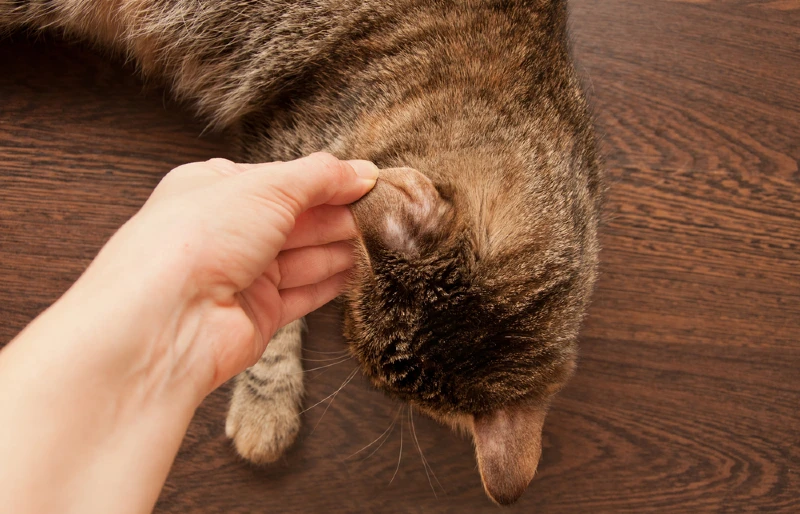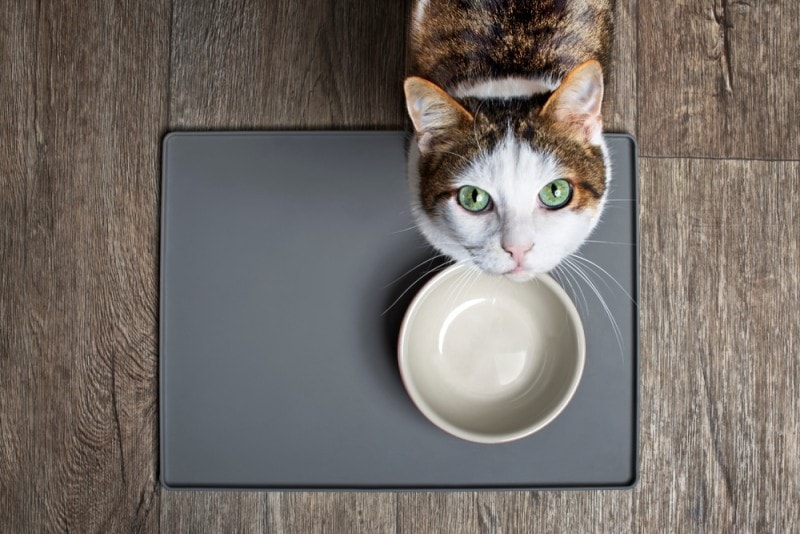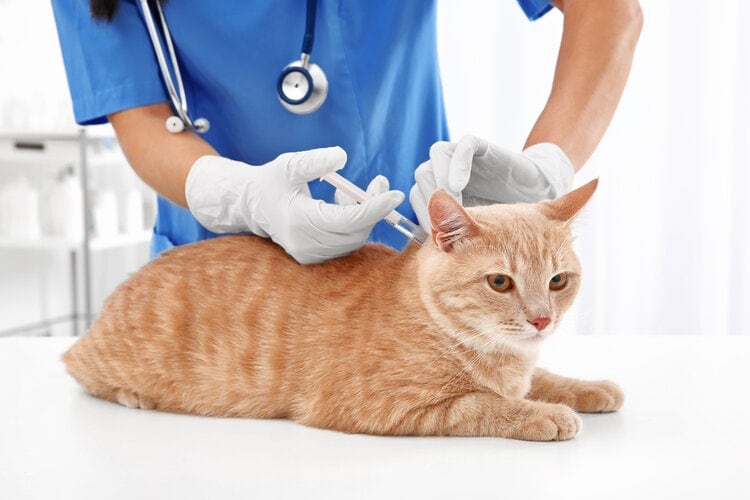Dog Peeing a Lot: When to Worry & What to Do (Vet Answer)
By Dr. Paola Cuevas, MVZ (Vet)
Updated on
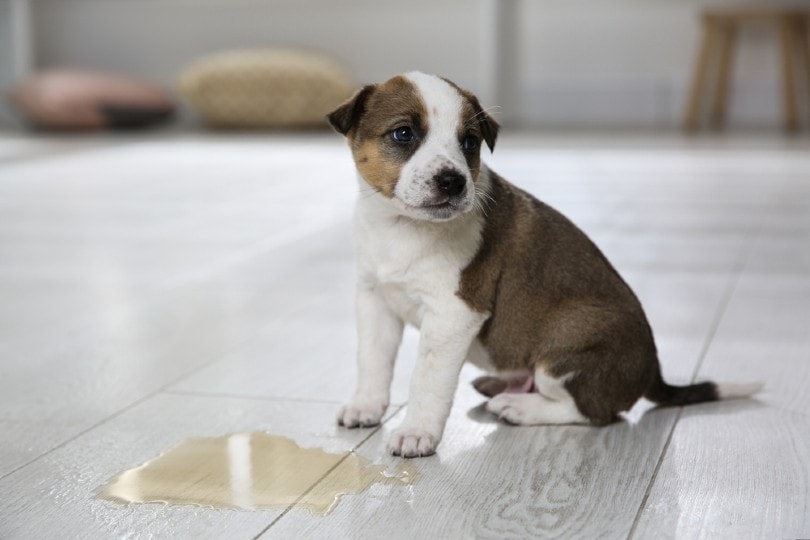
If you have recently noticed that your dog is peeing more than usual, either because they are asking to be let out more often or because you have noticed an increase in the frequency of the dog’s urination, it is very important to examine the case in detail. Sometimes, due to many different reasons, dogs may be drinking more water than normal and this can lead to increased urine production. Detailed observations and some general information should help you and your vet be able to distinguish between behavioral, environmental, or medical causes for increased urination.
In many cases of dogs that have started peeing a lot, either suddenly or it has become more obvious over a few weeks or months, there will often be an underlying health condition responsible for it that will warrant a prompt veterinary check.
Possible Causes for a Dog Peeing a Lot
There are many possible explanations and causes why your dog may seem to be peeing more than usual. Some are more straightforward to establish, such as territorial marking or frequent peeing in case of puppies, where the amount of urine produced is actually normal. Others may be more challenging and typically point to a more serious underlying issue. It’s important to understand if your dog is actually producing more urine than usual.
There are many medical conditions that can cause a change in your dog’s peeing habits, from frequency of urination to the amount, smell or color of urine, and these signs can get worse if left undiagnosed and untreated. It’s impossible to list them all, so please consult with your vet for a thorough clinical exam and further testing. Here are some of the more common explanations and reasons for dogs either appearing to pee more or genuinely producing more urine, from more benign ones to the serious underlying health issues.
- Age-related
- Territorial
- Environmental or Compensatory
-
Medical
-
a. Disease
- i. Urinary tract infection
- ii. Endocrinopathy
- iii. Diabetes
- iv. Kidney disease
- v. Liver disease
- b. Incontinence
- c. Drug-induced
-
a. Disease
Polyuria is a term used to describe increased urine production and volume. In case of the behavioral-related factors and some medical ones, which we will discuss next, the total volume of urine produced by the body remains unchanged. Polyuria itself is not a disease but merely a sign of either a compensatory system or several medical conditions or diseases.
If your dog is genuinely producing more urine than normal, sometimes combined with increased drinking as well, or they are peeing more frequently and not marking their territory, they should get checked out by your veterinarian as soon as possible.
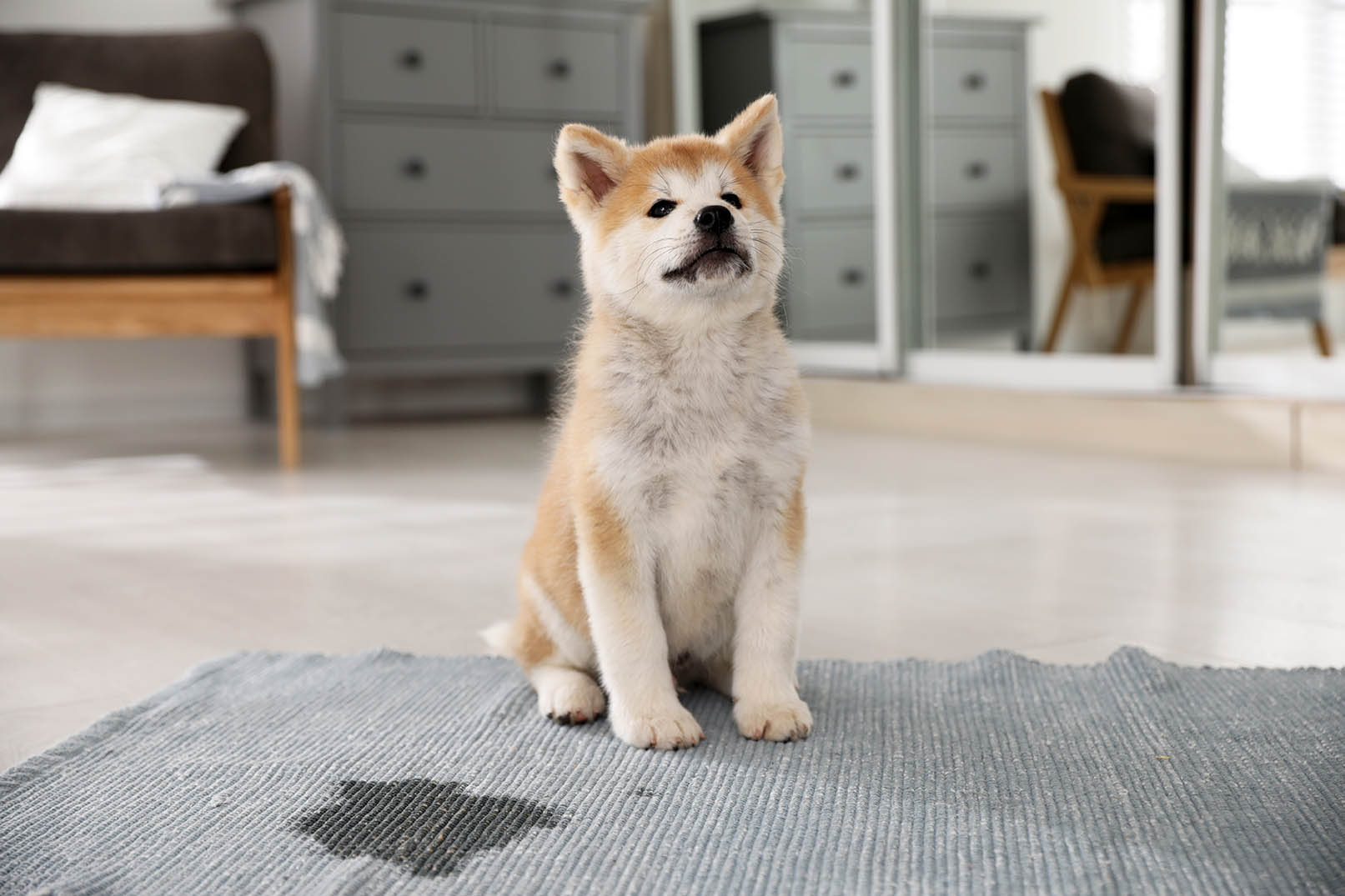
How Do I Know if This Is Behavioral or Medical Related?
As a dog owner, your observations are a very valuable asset in understanding any changes in your dog’s behavior. Your observations are also very helpful while building up a complete medical history that will aid the veterinarian to accurately diagnose a disease if that’s the case.
As a general rule, you must be able to clearly distinguish when a dog is peeing, from when a dog is marking or when a dog is involuntarily leaking urine.
Age-Related Factors That Affect Urination
Generally, puppies that are still learning to control their bladders urinate more frequently than fully grown dogs. On average, a puppy may urinate once every 2 hours, and that is considered normal.
Unfortunately, in some cases, owners usually fail to observe their adult dog’s normal urination habits. Once the pet learns how to “go outside” and they no longer have to deal with a mess, urine does not even cross their mind, ever again.
It is always a good dog owner practice to keep a close eye on your dog and familiarize yourself with their urinating habits. This will allow you to have a baseline of what is normal for your dog and you will be able to notice any potential problem earlier. On average, an adult dog may urinate every 4 or 6 hours, although this can be longer for some and closer to every 8 hours.
Territorial Factors That Affect Urination
Dogs use their urine to mark territory. This behavior is observed in dogs as they enter puberty, and may become obvious from 6–9 months of age depending on their breed and size, which dictates the time of reaching their sexual maturity. Dogs mark the territory where they live, the paths where they walk, objects, and more. It is a way of social communication between dogs. Marking is more common in unneutered males and unspayed females. This suggests marking is also a way of communicating reproductive and hormonal status. It has been observed that marking behavior in females may correlate with the time surrounding their heat cycle, although some females will do it regardless of their heat.
If you are a first-time dog owner, it is very important to familiarize yourself with how to tell marking apart from urination. Generally, marking is brief, only a small volume of urine is expelled, and frequently marking is constantly repeated in the same spots or sites. Marking is part of the normal behavior of dogs. Sometimes, excessive marking can become an issue known as problematic or inappropriate marking; this is a behavioral problem and not a medical problem.
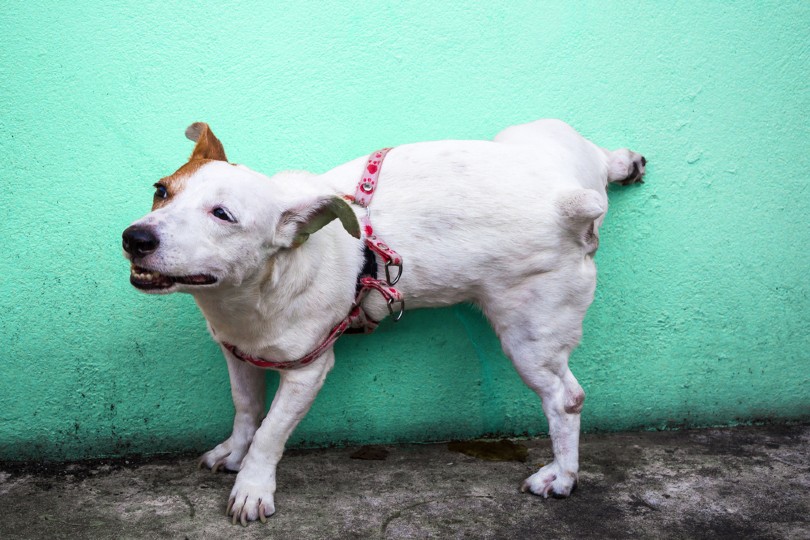
Other Behavioral Factors That Affect Urination
Other behavioral factors that can cause dogs to urinate are anxiety and excitement. Some of the factors that add to the dog’s anxiety are new dogs in or near their territory, separation anxiety caused by their owners being absent for prolonged periods, and the addition of new, unknown objects or noises to their environment, among others.
Some dogs urinate out of excitement, such as when the owner returns home or when they anticipate something that they like. If the dog is urinating while moving the tail simultaneously, most likely it is excitement urination.
None of these behavioral factors will cause an actual increase in the production of urine, but instead the dog is more commonly observed to be peeing, which can be mistaken for peeing a lot. Next we get into the environmental and medical causes that may lead to genuine increased volume of urine, but again not always.
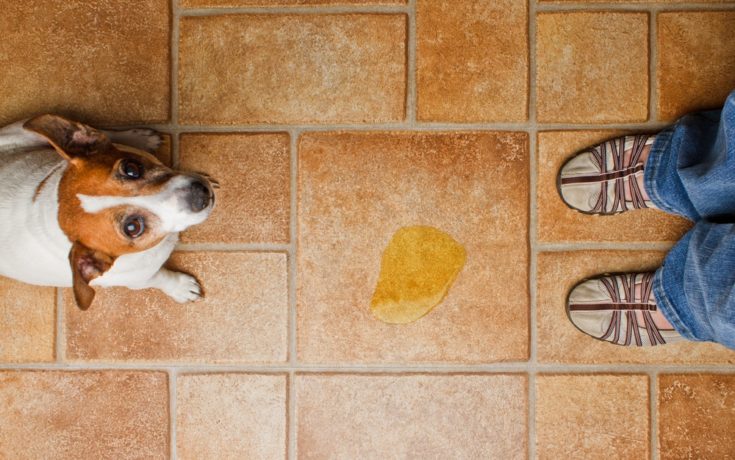
Environmental Factors That Affect Urination
It is relatively normal that during hot summer months, often combined with swimming, dogs drink more water and consequently they may urinate more. If your dog is drinking and urinating more, it is important to consider if the environmental temperature might be the reason.
A slight increase in urination linked to an increase of water consumption due to higher environmental temperature is normal. This can be named “compensatory polyuria” and is not a disease.
Health-Related Factors That Affect Urination
Obviously, health-related factors that affect urination in the dog are the biggest concern. If you are an observant owner, you might have noticed if your dog’s urinating habits have changed. However, it is not always easy to know if the dog is actually urinating more in total volume or just in frequency. If this is not related to any of the factors that we mentioned previously, please bring your dog to visit the veterinarian for a checkup.
As explained, increased urination is a sign rather than a disease itself and several medical conditions can cause this problem. The veterinarian is trained to collect and interpret the necessary information to diagnose the underlying condition behind your dog’s increased urination.
The veterinarian will perform a physical examination of your dog and might collect blood, and a urine sample. In some cases, the veterinarian will want to collect a sterile urine sample directly from the urinary bladder using an ultrasound to guide the precise puncture with a needle and syringe into the bladder. Depending on the specifics of the case the veterinarian might need to perform further diagnostic studies such as X-rays, or ultrasounds.
Urinary Tract Infection
If the veterinarian finds out that your dog is suffering from a urinary tract infection, it is good to know that prognosis is usually very good for this condition, especially if it is diagnosed early.
Generally, urinary tract infections increase the frequency of urination but not the total volume of urine produced. It is a good dog owner practice to keep a close eye on your dog and familiarize yourself with their urinating habits.
- Change in the position of urination. In this case, even adult male dogs might urinate bending the hind legs (like puppies do) instead of raising a single leg sideways as most adult male dogs urinate normally.
- Taking a longer than normal time attempting to urinate before starting to urinate, urinating small amounts each time.
- Increased frequency of urination. They may pee a dozen times or more during a short walk, unlike their usual two or three times. Make sure to differentiate this from territory marking.
- Urine accidents inside the home.
- The dog seems to have painful urination, sometimes even growling or yelping while urinating.
- The urine has blood, is cloudy, or has a foul smell.
- Straining to urinate, sometimes not passing any urine at all or only a few drops of often bloody urine.
Please bring your dog for a veterinary consultation immediately if you notice any of these signs, particularly if your dog is straining to urinate and not being able to pass any urine. This is more common in male dogs and may indicate a urinary obstruction that can be life threatening. Your observations are very valuable, especially considering that by acting quickly you can avoid an infection to complicate, for example, a urinary tract infection. Left unattended, a urinary tract infection can develop into a kidney infection.
Assuming that the infection did not complicate matters, your dog will most likely be put on oral antibiotics and then recover normal urinating habits.
Incontinence
There can be several underlying medical causes and treatments of urine leakage or incontinence in dogs. As a general rule, urine amounts are small and you will notice that your dog seems unaware of the fact that they passed any urine. Wet patches are often found where your dog was sleeping. The total volume of urine is not increased in this case.
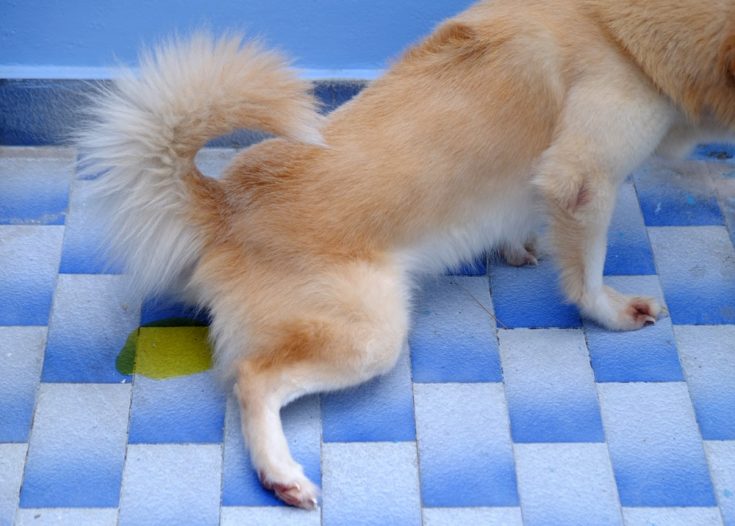
Pathological Polyuria
An adult dog’s normal urine volume is approximately 20 to 40 milliliters of urine per kilogram of body weight in 24 hours, and polyuria is defined as a daily urine output of greater than 50 milliliters of urine per kilogram of body weight in 24 hours. However, measuring urine milliliters is not expected from an owner; we only do this at the veterinary clinic if we need precise information for a differential diagnosis between probable causes of polyuria.
Polydipsia/Polyuria
It is common for pathological polyuria to come in combination with polydipsia, the medical term of an abnormally increased consumption of water. This might sound confusing to you as you just read that sometimes slightly increased urine production may be caused by increased water consumption during higher environmental temperatures. However, some diseases such as diabetes cause a cycle of increased water consumption and increased urination. This happens regardless of environmental temperatures and it is definitively more marked.
- Diabetes mellitus
- Diabetes insipidus
- Hepatic Disease
- Renal disease
- Hypoadrenocorticism: a decrease in steroid production by the adrenal glands
- Other hormonal diseases such as hyperadrenocorticism or Cushing’s disease
- Some kinds of tumors and malignancies
- Reproductive system infections such as pyometra in females
- Electrolyte imbalances, such as hypercalcemia, hypocalcemia
- Serial blood sampling. In this case, you can expect your dog’s blood sample to be collected more than once a day, before and after food intake, or, in other examples, before and after certain medicines are administered.
- Exact water intake and urine output measurements tests.
- Water deprivation tests where your dog’s water intake will be limited to a certain amount for 24 hours with urine collected, measured, and tested more than twice during that period.
- Diagnostic imaging such as ultrasounds, X-rays, and, in some cases, even MRIs.
At this point, it is very important to be very observant of details and let your veterinarian know if you notice any other signs in your dog, such as vomiting, diarrhea, lack of appetite, weight loss, etc.
Drug-Induced Polyuria or Pharmacological Polyuria
Increased urination in your dog might also be a consequence of ongoing treatment, or a drug overdose.
- Diuretic agents
- Glucocorticoids
- Some anticonvulsants
- Synthetic thyroid hormone supplements
Polyuria can also be observed following administration of intravenous fluids. Although these are not drugs, per se, they are classified in this category.
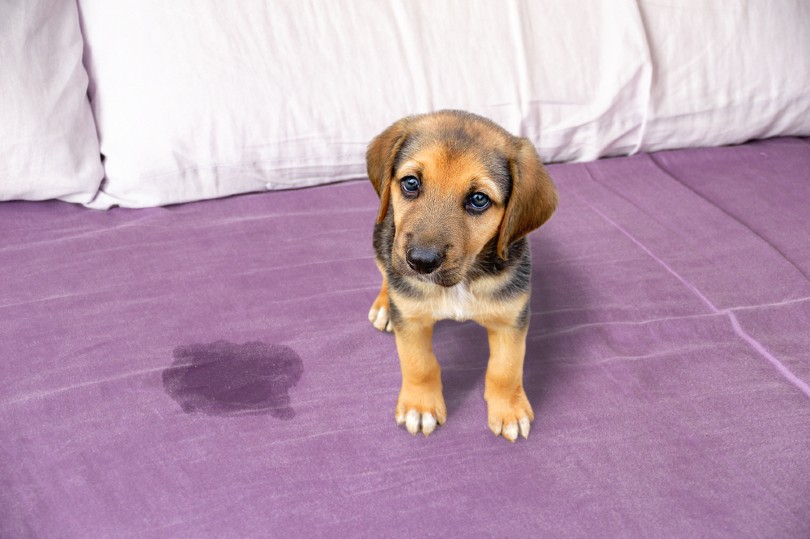
Final Thoughts
It is recommended to familiarize yourself with your dog’s habits. Having a clear idea of how many times a day your dog urinates, where, and at what times is a good starting point before you are able to grasp if your dog is genuinely peeing a lot. Try to note other details like the position they assume, the color of the urine, and even the amount of water they regularly consume. Increased urination in your dog can be caused by behavioral, environmental, or medical issues. It is important to be able to distinguish an increased frequency of urination from the increased volume of urine.
If the cause behind your dog’s increased urination is medical, the treatment will depend on the underlying cause. Some conditions resolve completely with medications or surgery, however, some of these diseases do not have a cure and require ongoing management, while others can be controlled with a therapeutic diet.
If you have noticed that your dog is urinating a lot and you suspect this is due to a medical problem, take your dog to the veterinary clinic for a checkup. Following the veterinarian’s specific instructions and prescriptions will ensure your dog enjoys the best quality of life.
Featured Image Credit: New Africa, Shutterstock




